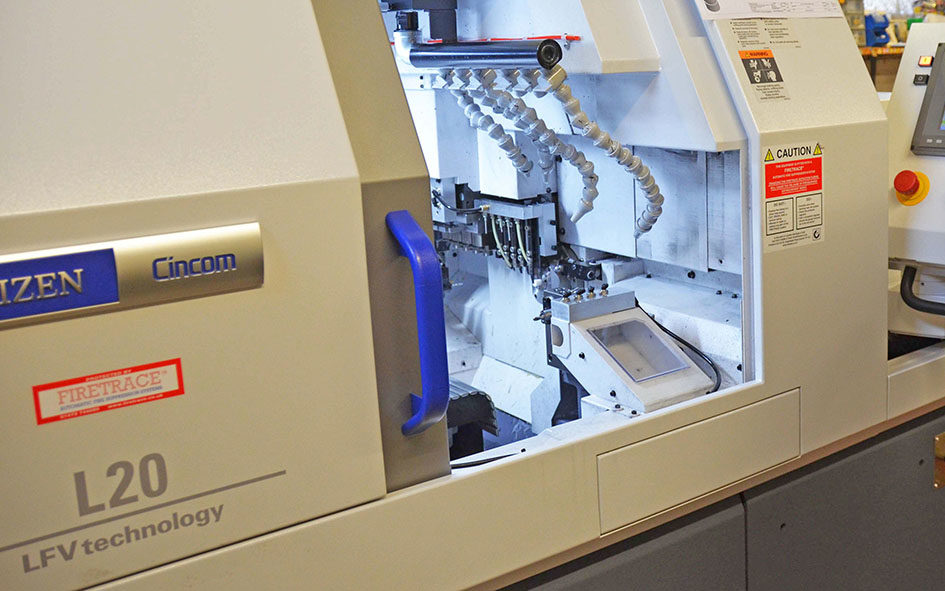With the recent addition of an own product involved with fire suppression to its highly successful sub-contract machining operation, HPC Services of Ilkeston, Derby, has ordered the latest Citizen Cincom L20-VIIILFV turn-mill centre from Citizen Machinery UK. By including Low Frequency Vibration (LFV) machining technology in the specification, Managing Director of HPC Paul Cobb maintains this will give his business a lead in the market by revolutionising his production of materials such as 321 corrosion resistant and 416 chromium steel alloy stainless steels and plastics type materials.
Said Mr Cobb: “This machine will enable us to competitively quote on new work which we would normally decline and will give us additional capacity as we build up production on our in-house developed water-based fire suppression system.”
HPC has currently 10 Citizen Cincom machines installed, with the last Cincom L12-VII ordered from the Citizen Machinery stand at MACH 2016. This is currently very competitively producing components as part of a 40,000 a year contract. The plastics tube, 110 mm in length is turned and a hole produced through its length to a concentricity tolerance of 0.05 mm TIR. Said Mr Cobb: “So productive is the machine that we have reduced our cycle time from over a minute to just 12 secs.”
Such is the advantage of the technology breakthrough in production machining of the Citizen patented LFV process, that is already achieving considerable success across Citizen Cincom CNC sliding head turn-mill centres. In particular, as it enables selected operational sequences to be programmed at the machine control to impart the size of chip to be produced. LFV is now being used to transform production over a wide range of material types from plastics, aluminium and copper to high tensile stainless and other high grade steels.
The ability for the operator to control the size of chip produced eliminates problems such as ‘bird-nesting’, improves depth-of-cut and surface finish, delays the onset of built-up edge on tooling and dramatically aids the management of swarf. It can be applied to turning, profiling, facing, taper and interrupted cutting sequences plus drilling and even thread cutting.
Mr Cobb said: “Swarf control is a bugbear on certain materials and needs constant attention to prevent birds-nesting and swarf being picked-up with the part as it is transferred to the sub-spindle of the machine. On some highly critical workpieces we even have to allow for a grinding operation to remove marks caused by swarf. This is where LFV will transform our operations.”







